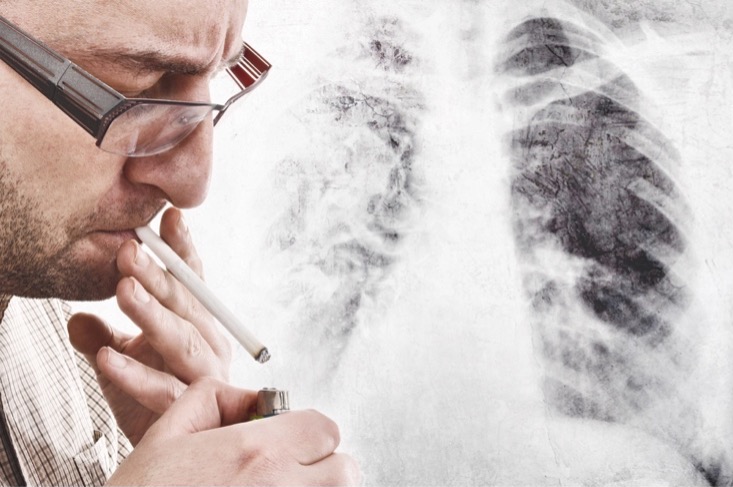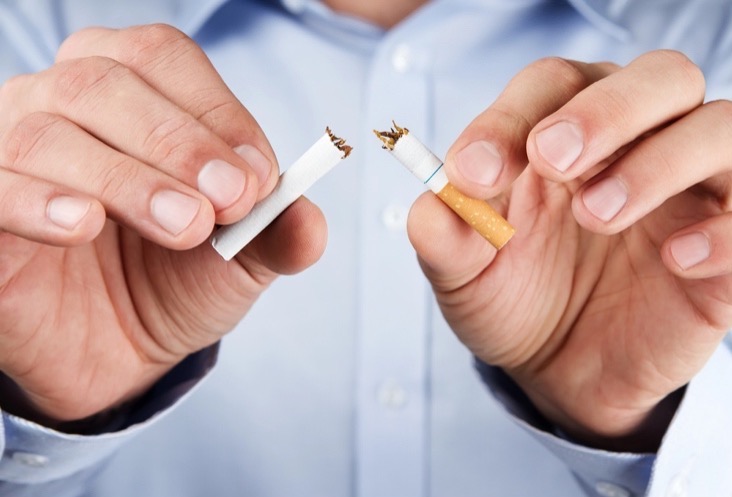- Who Will Benefit From This?
- Why Smoking Is a Hidden Enemy of Men’s Health
- How Nicotine and Tar Affect the Male Body
- Smoking and Testosterone: Scientific Data on Hormonal Imbalance
- Erectile Dysfunction and Smoking: A Direct Link
- “Cigarette Impotence”: Real Stories and Medical Cases
- Smoking and Sperm Quality: Why Fertility Suffers
- Recovery After Quitting Smoking
- Passive Smoking and Sexual Health: Are There Risks?
- Vapes, IQOS, and Hookahs: Safe Alternative or Deception?
- How the Body Recovers After Quitting Smoking
- What Will Help You Quit Smoking? The Best Methods According to Doctors
- Practical Tips From Doctors
- New Technologies
- Conclusion: How to Restore Male Power and Protect Health
Erection Under Attack: What Science Says About the Harm of Smoking for Men
-
Published:24 April 2025
-
Updated:25 April 2025

Smoking is the most common cause of premature death and loss of productivity. Every 6-8 seconds in the world, one person dies from tobacco-related causes, which is 5 million people a year! Tobacco has a carcinogenic effect, causing cancer in at least 12 different parts of the body: in the lungs, oral cavity, nasal cavity, paranasal sinus, larynx, throat, esophagus, pancreas, stomach, liver, renal pelvis, and gall bladder. Tobacco also causes myeloid leukemia, that is, blood cancer.
This article is not just a warning, but a detailed analysis of how nicotine and combustion products affect the male body, what processes they trigger, and, most importantly, how to recover if you quit smoking right now.
Who Will Benefit From This?
- Smoking men who notice problems in bed.
- Those who believe that “light cigarettes” or vapes are safe.
- Wives and partners who want to help a loved one.
- Anyone who believes that health can be restored, even after many years of smoking.
Fact: smoking reduces a man's odds of becoming a parent by 30% and doubles his risk of impotence, according to WHO research. Would you be willing to spend that much on cigarettes?
Why Smoking Is a Hidden Enemy of Men’s Health
Although smoking is frequently linked to heart and lung conditions, its detrimental effects on the male reproductive system are still little understood. Men who smoke more than ten cigarettes a day are 65% more likely to get erectile dysfunction, according to research (Journal of Sexual Medicine, 2024). Toxic tar disrupts sperm DNA, which directly causes infertility and sexual issues, while nicotine narrows blood vessels, interrupting the blood supply to the genitals.
The World Health Organization has even more concerning statistics: males who smoke have a 1.5-fold increased risk of having low testosterone, the hormone that controls libido, muscle mass, vitality, and even looks. However, many people attribute their weariness and diminished power to age or stress rather than smoking. In actuality, smoking causes male aging to accelerate, with sexual functioning being the first to suffer.
How Nicotine and Tar Affect the Male Body
Every puff of a cigarette triggers a chain of destructive processes in the male body.
Here’s what actually happens:
- Vascular spasm: nicotine causes a sharp narrowing of capillaries, worsening blood supply to the genitals. Within 7 minutes after smoking, blood flow decreases by 25–40%.
- Tissue hypoxia: carbon monoxide from smoke replaces oxygen in the blood, leading to oxygen starvation of all organs, including the prostate.
- Hormonal imbalance: toxins suppress testosterone production, resulting in decreased libido and muscle mass.
- DNA damage: tar causes mutations in sperm, increasing the risk of infertility and congenital pathologies in future children.
A particular danger is the cumulative effect:
- After 5 years of regular smoking, the number of motile sperm decreases by 52% (European Urology, 2023).
- Testosterone concentration in long-term smokers is 15–20% below normal.
- The risk of atherosclerosis of the pelvic arteries increases threefold, directly leading to erectile dysfunction.
These changes occur imperceptibly, but irreversibly the reproductive system, unlike the lungs, cannot cleanse itself without special therapy, even after quitting smoking.

Smoking and Testosterone: Scientific Data on Hormonal Imbalance
Sperm motility is the ability of reproductive cells (also called gametes) to move effectively toward the egg. Movement is a complex mechanism without which conception is impossible. Smoking has been shown to impair sperm motility, reducing the chances of gametes reaching the egg and fertilizing it. Chemicals in tobacco can affect the structure and function of the sperm tail, which is responsible for launching and effectively moving forward.
- Abnormal sperm morphology
Morphology refers to the size and shape of sperm. Smoking can lead to an increase in abnormal sperm morphology, with a higher percentage of sperm having defects. Altered sperm are less likely to penetrate the egg. But even if conception does occur, the risk of embryonic development stopping and early pregnancy termination increases dramatically.
- DNA damage
Smoking-induced oxidative stress can damage the DNA in sperm. This damage is dangerous in terms of chromosomal abnormalities in the embryo and, subsequently, the fetus. In case of conception, DNA damage can lead to miscarriage or birth defects. DNA fragmentation in sperm (DNA breaks, chain breaks) is actually a defect in the sperm nucleus. That is why we study this process - one of the most important factors in male infertility.
- Hormonal imbalance
Smoking can change hormone levels, including testosterone, which is necessary for sperm production and overall reproductive health in men. Changes in hormone levels can negatively affect sperm production and lead to fertility problems.
- Increased risk of erectile dysfunction
Smoking is a risk factor for erectile dysfunction, which is very psychologically burdensome for men and can therefore further complicate fertility. Vascular damage caused by smoking can impair blood flow to the penis, making it difficult to achieve or maintain an erection.
- Oxidative stress and inflammation
Smoking increases oxidative stress and inflammation in the body, which can be detrimental to sperm health. The presence of reactive oxygen species can damage sperm and lead to decreased fertility.
Erectile Dysfunction and Smoking: A Direct Link
Smoking is one of the most significant risk factors for erectile dysfunction (ED), and this relationship is clearly dose-dependent.
According to a large study published in the American Journal of Epidemiology:
- In men who smoke more than 20 cigarettes a day, the risk of ED increases 2.5 times compared to non-smokers.
- Even with “moderate” smoking (5–10 cigarettes/day), the likelihood of erection problems increases by 65%.
- 40% of smokers with more than 10 years of experience develop pronounced ED requiring medication.
The mechanisms of this harmful effect are diverse:
- Vascular factor: nicotine causes vascular spasm and damages the endothelium, reducing blood flow to the corpora cavernosa by 30–40% after just one cigarette.
- Neurological disorders: tobacco toxins impair the conduction of nerve impulses necessary for the onset and maintenance of an erection.
- Hormonal imbalance: a 15–20% decrease in testosterone in smokers directly affects libido and erection quality.
- Psychogenic component: chronic brain hypoxia leads to increased anxiety and fear of sexual failure.
Especially alarming is the fact that in 25% of men with “cigarette” ED, the disorders become irreversible even after quitting smoking, due to changes in the vascular system. This underscores the importance of quitting the harmful habit as early as possible to preserve men’s health.

“Cigarette Impotence”: Real Stories and Medical Cases
The clinical practice of urologists and andrologists is full of examples where smoking has caused serious sexual disorders. Here are some typical cases from medical reports and frank confessions of patients.
Doctor’s Story 1
A 38-year-old man came for a consultation, complaining of progressive erectile dysfunction. Examination revealed critical stenosis of the penile arteries, 65%. The patient had smoked 1.5 packs a day for 15 years. After angiography, it became clear that the blood vessels of the 45-year-old man corresponded to those of a 60-year-old. The prescribed therapy gave only a temporary effect, and surgical intervention was required.
Doctor’s Story 2
A couple came to the andrology clinic with complaints of infertility. Analysis showed the man had oligospermia, a critically low sperm count. Medical history revealed that the patient had smoked a pack of cigarettes daily for 8 years. After 6 months of quitting smoking and therapy, spermogram indicators improved by 40%, allowing the couple to conceive naturally.
Patient Story 1 (Michael, 42 years old)
“The problems started unnoticed, first the erection became less stable, then the spontaneous morning ones disappeared. When I was 40, I couldn’t have intercourse, and I realized it was a disaster. The doctor explained that my 20 years of smoking simply ‘killed’ my blood vessels. I quit smoking immediately, but recovery took almost a year. Now, with medication, my sex life has improved, but my former health is gone.”
Patient Story 2 (Alex, 35 years old)
“I thought impotence at my age was nonsense. But after 10 years of smoking, I faced the fact that my erection disappeared at the most crucial moment. The urologist found a 50% narrowing of the vessels. The shock was that even after quitting, the problems didn’t go away, and I had to undergo a long course of treatment. Now I understand that if I had quit smoking at 25, all this could have been avoided.”
These tales eloquently illustrate that "cigarette impotence" is a terrible reality rather than a myth. It is common for people to become aware of the link between smoking and issues only after their conditions have worsened. It's crucial to realize that the sooner someone quits a bad habit, the better their chances are of staying healthy. We shall examine the mechanics of damage and recovery techniques in greater detail in the sections that follow.
Smoking and Sperm Quality: Why Fertility Suffers
Numerous clinical studies have proven that smoking is one of the most important causes of lowered male fertility. All of the important sperm characteristics, including motility, morphology, and DNA integrity, are impacted by tobacco smoke toxins. Let's examine the mechanics underlying this influence as well as recent scientific findings.
Decrease in Sperm Count and Concentration
A European Urology (2016) study involving 5,865 men showed that smokers’ sperm concentration is 23% lower than that of non-smokers. This is due to:
- The direct toxic effect of cadmium and nicotine on Leydig cells is responsible for spermatogenesis.
- Hormonal imbalance: in smokers, estradiol (female hormone) levels increase, which suppresses the production of testosterone, the key hormone for sperm production.

Impaired Sperm Motility
Sperm motility in smokers drops by 13–15%. Reasons:
- Oxidative stress, tobacco toxins (e.g., benzo[a]pyrene) damage mitochondria in sperm tails, depriving them of energy for movement.
- Inflammation from chronic smoke exposure increases cytokine levels, which disrupt the function of the epididymis, where sperm mature and acquire motility.
Worsening Morphology and DNA Damage
Smokers are 1.5–2 times more likely to have abnormal sperm forms. For instance, a greater proportion of their cells exhibit head abnormalities, like the lack of the acrosome, which is essential for egg penetration.
Men who smoke have 30–35% DNA fragmentation (normal values are up to 15%). This increases the risk of:
- Infertility (even with IVF, the fertilization ability of such sperm drops by 40%).
- Miscarriages and congenital pathologies in the child (for example, Down syndrome).
Long-term Consequences
After five years of consistent smoking, there is a cumulative effect, with 52% fewer motile sperm. Offspring are also affected because smoking dads alter sperm epigenetics, and their children are twice as likely to develop leukemia and autism.
Recovery After Quitting Smoking
After 3 months without cigarettes, sperm concentration increases by 20%.
The likelihood of conceiving a healthy child increases dramatically after 6–12 months, when DNA fragmentation diminishes. Although smoking has been linked to male infertility, its detrimental effects are reversible. The best method to preserve reproductive health and enhance sperm quality is to break the habit.
Passive Smoking and Sexual Health: Are There Risks?
It's a common misperception that passive smoking is less harmful than active smoking. According to studies, non-smoking men's sperm quality is reduced by 17–23% when they regularly inhale tobacco smoke for more than three hours each day. The same poisons that damage the reproductive system and enter the body through the lungs nicotine, carbon monoxide, and heavy metals are at blame for this.
Teens and young men are particularly vulnerable to the harmful effects of passive smoke. Compared to peers from non-smoking households, adults who grew up in smoking households often had 20% lower sperm concentrations. This is because toxins disrupt the formation of the reproductive system during puberty, causing irreversible changes in the testes.
Passive smoking has no less detrimental effects on sexual function. Men who are compelled to breathe tobacco smoke regularly, for instance, at work, are 1.5 times more likely to experience erectile dysfunction. The process is straightforward: smoke's carbon monoxide attaches itself to hemoglobin, decreasing the amount of oxygen reaching the genitalia and eventually causing vascular diseases.
The good news is that the harmful effects of passive smoking go away in three to six months if you stop coming into contact with tobacco smoke. This is supported by a study that found that men's sperm parameters were completely restored within six months of switching from smoky rooms to smoke-free environments. The conclusion is straightforward: quitting your own unhealthy habits is just as vital as protecting yourself from other people's smoke.

Vapes, IQOS, and Hookahs: Safe Alternative or Deception?
Many smokers switch to vapes, IQOS, and hookahs, considering them less harmful alternatives to cigarettes. However, studies show that these products are not safe and can cause serious health damage. For example, vapes contain flavorings and propylene glycol, which, when heated, form toxic compounds that damage the lungs. In Russia, cases of “vape-associated lung injury” have already been recorded, especially among young people who are fond of vaping.
Despite being marketed as a "smokeless" substitute, IQOS is not risk-free. Compared to cigarette smoke, heating tobacco lowers the amount of carcinogens, although nicotine and other chemicals still reach the body. According to Russian medical professionals, IQOS users continue to be dependent on nicotine, and the long-term health effects are not entirely known.
Many people mistakenly believe that hookahs are a harmless hobby, however, this is deadly. The amount of carbon monoxide inhaled during a single hookah session is comparable to several dozen cigarettes. Smoking in inadequately ventilated rooms has led to a rise in carbon monoxide poisoning incidents among hookah enthusiasts. Furthermore, sharing mouthpieces raises the possibility of spreading harmful illnesses like COVID-19 and tuberculosis.
None of these products is a safe substitute for cigarettes.
How the Body Recovers After Quitting Smoking
When a person stops smoking, powerful recovery processes are triggered in the body, starting within the first hours without cigarettes. However, the speed of returning to normal depends on smoking history, the number of cigarettes per day, and overall health. Let’s look at what positive processes begin in the body after giving up the bad habit:
- After 20 minutes: blood pressure and pulse normalize.
- After 8 hours: blood oxygen levels return to normal.
- After 24 hours: the risk of heart attack begins to decrease.
- After 48 hours: nerve endings recover, smell and taste return to normal.
- After 3 days: the body is completely cleared of nicotine.
- After 2 weeks: circulation improves, physical endurance increases.
- After 1 month: the lungs begin to recover, coughing decreases.
- After 3 months: lung function improves significantly.
- After 9 months: shortness of breath disappears, the frequency of respiratory diseases decreases.
- After 1 year: the risk of coronary heart disease is halved.
- After 5 years: the likelihood of stroke decreases to the level of non-smokers.
- After 10 years: the risk of lung cancer is halved.
- After 15 years: the likelihood of cardiovascular diseases becomes the same as in those who never smoked.
Despite the body's remarkable capacity for recovery, certain harm particularly following years of smoking—may be irreparable. For instance, atherosclerotic plaques or emphysema in the arteries do not entirely go away. Even in these situations, though, giving up smoking greatly enhances quality of life and delays the advancement of the disease.
The main thing is to remember: the earlier you quit smoking, the greater your chances of complete health recovery. Every day without cigarettes is a step toward a fuller, healthier life.
What Will Help You Quit Smoking? The Best Methods According to Doctors
Quitting smoking is not easy, but it is entirely possible, and modern medicine offers many ways to help. Here are the most effective methods based on scientific data and medical recommendations.
Medication Therapy
Pharmacological methods help gently overcome nicotine addiction, reducing cravings and withdrawal symptoms. Doctors recommend the following options:
Nicotine Replacement Therapy (NRT)
- Patches provide a constant dose of nicotine, reducing cravings.
- Chewing gum or lozenges help with sudden urges to smoke.
- Sprays and inhalers serve as a quick source of nicotine, imitating the smoking process.
Pharmacological Drugs
- Varenicline (Champix) blocks nicotine receptors, reducing the pleasure of smoking.
- Bupropion (Zyban) is an antidepressant that reduces nicotine cravings.
- Cytisine (Tabex) is a nicotine receptor agonist that helps gradually quit cigarettes.
Psychotherapeutic Methods
Working with psychological dependence is no less important than overcoming physical cravings for nicotine. Specialists highlight several effective approaches:
- Cognitive-behavioral therapy (CBT) helps change thinking and reactions to smoking triggers.
- Hypnosis instills aversion to smoking, but effectiveness depends on suggestibility.
- Group therapy support from others who are quitting increases motivation.
Alternative and Folk Methods
When traditional methods do not help or you want to try something new, you can turn to time-tested techniques. These approaches are especially effective when combined with primary smoking cessation methods:
- Acupuncture affecting biologically active points reduces cravings.
- Breathing practices (yoga, meditation) help cope with stress without cigarettes.
- Herbal remedies, for example, oat or calamus root decoction, reduce nicotine “withdrawal.”
- Habit substitution: chewing ginger, seeds, or using vapes (although the latter are not safe).

Practical Tips From Doctors
For those who prefer to act independently, specialists have developed several practical recommendations. These simple yet effective tips will help you get through the quitting period more easily:
- “Cold turkey” method. Abrupt and complete cessation of smoking without any substitutes is one of the most effective methods, but it requires strong motivation and psychological preparation. This method is especially suitable for those who have smoked for a relatively short time or have little smoking experience. The main advantage is rapid cleansing of the body from nicotine, but the first 3–5 days may be accompanied by severe discomfort, irritability, and obsessive cravings. It's important to prepare for this period in advance. Remove all cigarettes and accessories, inform loved ones of your decision, and enlist their support.
- Gradual dose reduction. This method involves systematically reducing the number of cigarettes smoked until complete cessation. It is ideal for those who have smoked for many years and are not ready for abrupt changes. Start by reducing the number of cigarettes by 1–2 per day, then set clear rules, for example, no smoking before lunch or in certain places. Gradually, the body adapts to lower nicotine doses, making the quitting process less stressful. However, it is important to set a clear schedule and end date for quitting; otherwise, there is a risk of getting stuck at the “moderate” smoking stage for a long time.
- Avoiding triggers. Smoking is often associated with certain situations, actions, or emotional states. Identify your triggers (morning coffee, alcohol, stress, work breaks) and try either to avoid them or to change habitual scenarios. For example, replace the morning cigarette with coffee, a glass of water, and breathing exercises, and use relaxation techniques in stressful situations. It is especially important to give up alcohol temporarily, as it reduces self-control and increases the desire to smoke.
- Physical activity. Regular exercise helps cope with nicotine addiction in several ways: it speeds up the removal of toxins from the body, reduces stress and anxiety, and increases endorphin (“happiness hormone”) levels, which compensate for the lack of nicotine. Even a 30-minute brisk walk or a light workout can significantly reduce cravings for cigarettes. In addition, sports improve lung, heart, and vascular function, which is especially important during recovery.
- Financial motivation. Calculating the money saved is a powerful incentive for those wishing to quit smoking. Start a piggy bank or a separate account where you deposit the amount that would have been spent on cigarettes. For example, at a pack price of $ 4 and a rate of 1 pack per day, you will save about $ 120 per month and about $1,500 per year. This money can be spent on something pleasant and useful, such as a gym membership, a trip, or a gift to yourself for achieving the result. Visualizing the benefit helps maintain motivation in difficult moments.

New Technologies
Modern technologies offer convenient tools for those who decide to quit smoking. For example, popular mobile apps such as:
- QuitNow is an international app with a community of people who quit.
- Smoke Free is an app with personalized quitting plans and health statistics.
They help monitor your progress, offer helpful advice, and serve as a reminder of your accomplishments (e.g., "Your lungs have started to clear after 7 days of not smoking!"). Numerous apps display your savings and the improvements in your health since you stopped smoking. This is a great method to keep everything under control and motivated.
Vapes and electronic cigarettes are frequently promoted as safer substitutes for traditional cigarettes. According to some research, they assist those who have stopped smoking by enabling a progressive decrease in the amount of nicotine they consume.
However, it is important to remember:
- Electronic cigarettes are not harmless; they contain nicotine, which maintains addiction, and other chemicals that affect the lungs.
- The long-term consequences of their use are not fully understood.
- WHO and many doctors recommend complete abstinence from nicotine, not switching to alternative devices.
If you consider vapes as a temporary measure, it is better to choose liquids without flavorings and gradually reduce the nicotine concentration to zero. But the ideal option is to combine this method with others, such as nicotine replacement therapy or psychological support.
Conclusion: How to Restore Male Power and Protect Health
Quitting smoking is not just a decision to give up a bad habit; it is a conscious choice in favor of a full life and preserving men’s health. As we have seen, every cigarette smoked strikes at the most important aspects of the male body, from hormonal balance to reproductive function. But the main thing to understand is that these changes are reversible if you act correctly and consistently.
First and most important, immediately stop the destructive effects of nicotine and other toxins on the body. Just a few weeks after your last cigarette, you'll start to feel the first positive changes: improved well-being, normalized blood pressure, and increased energy. But real transformations begin later, after 3-6 months, sperm quality improves significantly, libido is restored, and sexual endurance returns.
To speed up the recovery of men’s health, specialists recommend a comprehensive approach.
First, pay attention to your nutrition, including foods rich in zinc, selenium, and antioxidants (such as seafood, nuts, and greens) in your diet. Second, start regular physical activity. Cardio workouts and pelvic floor exercises are especially beneficial. Third, don't neglect regular medical check-ups. Check your testosterone levels, vascular health, and prostate condition.
Remember, recovery is an individual process. Some need a few months; others may need a year or more. It is important not to despair if results do not appear as quickly as you would like. Every day without cigarettes is a big step toward your goal.
Today, right now, you have the opportunity to make a choice that will determine the quality of your entire future life. Imagine yourself in a year free from addiction, full of strength and energy, able to enjoy all aspects of life without limitations. This is not a dream; it's a reality that begins with one simple decision. Your health, your male strength, and your future are in your hands.
Smoking and erectile dysfunction: evidence based analysis
(https://pubmed.ncbi.nlm.nih.gov/11586190/), J Urol. 2001 Nov;166(5):1624-32. By K T McVary, S Carrier, H Wessells. Accessed 25 Apr 2025.
SMOKING AND ERECTILE DYSFUNCTION: EVIDENCE BASED ANALYSIS (https://www.auajournals.org/doi/abs/10.1016/S0022-5347(05)65641-8), by Kevin T. McVARY, SERGE CARRIER, HUNTER WESSELLS. Published 1 Nov 2001. Accessed 25 Apr 2025.
Cigarette Smoking and Semen Quality: A New Meta-analysis Examining the Effect of the 2010 World Health Organization Laboratory Methods for the Examination of Human Semen (https://pubmed.ncbi.nlm.nih.gov/27113031/), Eur Urol. 2016 Oct;70(4):635-645. doi: 10.1016/j.eururo.2016.04.010. Epub 2016 Apr 21. By Reecha Sharma , Avi Harlev , Ashok Agarwal , Sandro C Esteves. Accessed 25 Apr 2025.
Effects of cigarette smoking on semen quality, reproductive hormone levels, metabolic profile, zinc and sperm DNA fragmentation in men: results from a population-based study (https://pmc.ncbi.nlm.nih.gov/articles/PMC10619690/), Front Endocrinol (Lausanne). 2023 Oct 18;14:1255304. doi: 10.3389/fendo.2023.1255304. By Ludmila Osadchuk, Maxim Kleshchev, Alexander Osadchuk. Accessed 25 Apr 2025.
In this article
- Who Will Benefit From This?
- Why Smoking Is a Hidden Enemy of Men’s Health
- How Nicotine and Tar Affect the Male Body
- Smoking and Testosterone: Scientific Data on Hormonal Imbalance
- Erectile Dysfunction and Smoking: A Direct Link
- “Cigarette Impotence”: Real Stories and Medical Cases
- Smoking and Sperm Quality: Why Fertility Suffers
- Recovery After Quitting Smoking
- Passive Smoking and Sexual Health: Are There Risks?
- Vapes, IQOS, and Hookahs: Safe Alternative or Deception?
- How the Body Recovers After Quitting Smoking
- What Will Help You Quit Smoking? The Best Methods According to Doctors
- Practical Tips From Doctors
- New Technologies
- Conclusion: How to Restore Male Power and Protect Health







.svg)
.svg)
